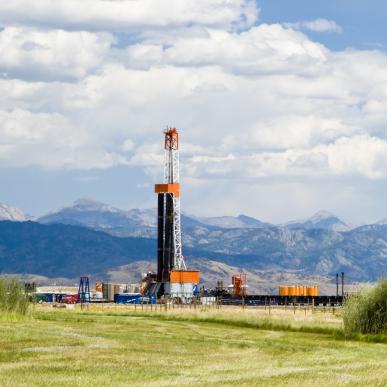This commentary originally appeared on our EDF Voices blog.
 Everyone knows that if you want your kids to grow up strong and healthy, they need to eat their vegetables. But as any parent knows, it’s easier said than done. That’s why in my house, there is a rule: you can’t have any dessert until you eat your vegetables.
Everyone knows that if you want your kids to grow up strong and healthy, they need to eat their vegetables. But as any parent knows, it’s easier said than done. That’s why in my house, there is a rule: you can’t have any dessert until you eat your vegetables.
Now, of course, my kids like to argue with me and my wife about exactly how many vegetables they have to eat and whether they can reach into the fridge and select a different vegetable if they don’t like the one she or I cooked that night. That’s okay. We like to encourage creative problem solving. But there’s no getting around the rule. You must eat your vegetables.
As I see it, methane pollution from the oil and gas industry is a lot like kids and vegetables. Reducing it is good for them, but we have to have a rule that requires them to do it.
According to a new report EDF commissioned, the U.S. oil and gas industry could achieve a 40 percent reduction in methane pollution within the next five years for less than one penny per million cubic feet of gas produced. The total amount of capital required to achieve this significant reduction would be less than 1% of the capital expenditures the industry made this year alone!
And, what does the oil and gas industry get for this investment? Well, for one thing, the report shows that certain measures actually return a profit to producers and pipeline owners, taking into consideration the gas that is recovered and sold rather than wasted into the air. The report also notes that many measures could reduce methane and other types of harmful air pollution, such as ozone-forming VOCs that contribute to health problems. In other words, even those measures that cost the oil and gas industry something in absolute terms yields a benefit to the industry over the longer term by addressing the air pollution that is one of the big reasons communities want to ban oil and gas production outright.
If the costs are so little and the benefits are so great, why isn’t industry already clamoring to make the changes that the report says are available and affordable?
I suspect that it’s because in today’s market – where oil prices are high and natural gas prices are relatively low – the oil and gas industry is in such a hurry to develop that next set of oil wells and the flush of new revenues this brings that they overlook opportunities to capture the methane that comes along with the oil, have even less interest in attending to their existing set of oil and gas wells where production, and revenues, may be slowly tailing off, and/or where associated infrastructure is paid off and any amount of new capital spending required eats into whatever profit margins there may be.
And so, like my kids at the dinner table, the U.S. oil and gas industry is in such a rush to get the sugar high that comes with large new oil revenues that they’d gladly pass up the marginal returns to be had in reducing methane and other air emissions, and avoiding pollution, which is important to their license to operate – their ability to thrive and grow – over the long term. That’s why we need a rule that says that the oil and gas industry must reduce methane pollution.
Now, I work at Environmental Defense Fund, and we put a premium on creative problem solving. In Colorado we worked closely with the state’s three leading oil and gas producers to craft a regulation that is both flexible and effective at addressing methane and other air pollution from oil and gas operations. Just last week, thanks in large measure to the leadership of Colorado’s Governor John Hickenlooper, this regulation was adopted by the Air Quality Control Commission at the end of a formal rulemaking hearing.
We think the Colorado air regulations can be a model for other oil and gas producing states. We also think it is an example that the U.S. Environmental Protection Agency should look at carefully, given that federal oil and gas air regulations don’t address methane pollution directly and have some other significant gaps. This new report shows us that regulating methane and other harmful air pollution is possible today, at minimal costs to industry. And the breakthrough recently made in Colorado combined with the report’s findings gives policymakers a blueprint of how reducing methane can be done.









